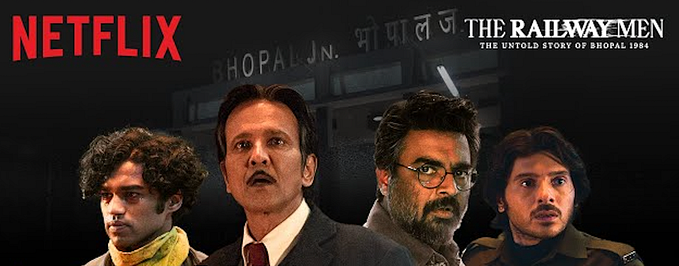SMALL DATA — by Martin Lindstorm

“To a great mind, nothing is little.”
- Sherlock Holmes, In “A Study in Scarlet”
Like most of the 90s kids, I grew up reading and admiring Sherlock Holmes. First in print, then on TV. Oftentimes, I even find my detective streak kicking in and I ask myself “What would Sherlock do?”. That’s what Sherlock does to you. So you can imagine that it was nothing short of an early Christmas for me when I stumbled upon SMALL DATA By Martin Lindstrom, who applies the same tricks to brands and business.
The book covers stories of how brand consultant and the author of the book, Martin Lindstrom, helped brands across the world to turnaround flailing sales by uncovering the desires and need gaps of its target customers through ethnographic research across small samples, he calls Subtexting.
In a world of big data and data science, he brings to light the small details businesses miss when relying entirely on big data, which while can predict larger trends fairly accurately, cannot reveal the why’s behind them. Lindstrom got the idea for this book while talking to Malcom Gladwell (link). Malcom told him that “In 1960, JFK single-handedly killed the hat industry by being the first President not to wear a hat to his inauguration.” It’s hard to verify or refute such statements. But it got him to think of the power of small data points and disproportionate impact they have, how we can look for them or better still benefit from them.
Lindstrom’s approach is akin to that of Holmes — observing, pressing on the customers to reveal subconscious desires, and deducing insights not just from what he observes or hears from the respondents in a given setting, but by connecting human behaviors and basic desires and needs of other humans inhabiting places thousands of miles apart.
“Maybe stories are just data with a soul.”
- Brené Brown
Two examples that stood out for me were those of LEGO and Roomba, largely due to the brands’ global availability.
1. With the advent of the digital age, it was observed that teenagers were spending less and less time on offline games such as LEGO and more and more on online ones, the reason cited being lower attention spans and a desire to get instant gratification. Relying on its big data findings, LEGO had started to shift its focus to ancillary businesses and dumbing down LEGOs to help finish the games quickly. The business was in a perpetual decline, when LEGO hired Martin to help them understand its target consumer better. What turned it around for them was an ethnographic visit to an 11-year old German skateboarding and LEGO enthusiast’s house. The researchers asked the kid what his most prized possession was. The kid proudly proclaimed it to be a pair of worn-out sneakers with ridges and nooks along one side — precisely at the right angle. The impression it conveyed to his friends and the world was that of mastery of the skill and his being the best skateboarder in the city. That encounter made the researchers realise that kids were not specifically looking for instant gratification but social acknowledgement for a high level of mastery in a skill they considered worthwhile. LEGO changed its strategy to focus on its core offering and made LEGO sets more complex. Kids now needed to apply themselves more to build their masterpieces and in turn won admiration from their peers and friends for being masters at the craft. Within ten years, LEGO in 2014, surpassed Mattle to become the world’s largest toy maker.
2. Roomba, a cleaning robot, was a prized possession among its owners. However, after its initial success, the sales started declining and Martin was called in to help the brand get back the same enthusiasm in its customers as before. Ethnographic visits to some customers’ homes revealed that for its owners Rumba had been like a living being, a pet they gave names to, loved to hear its ‘oh oh’ and ‘dood-dood’ voices when accidentally banging into the wall or backing up. For its owners it was not the functional benefits but the cuteness and the emotional connection that made them lifelong ambassadors of the brand. They left it half visible in their living rooms happy to show off to the visitors and make it the conversation starter. In fact for young males, it was even a ploy to hook up with women, who couldn’t resist the appeal of this ‘toy’. However, over time and several design and engineering changes later, Roomba had now been reduced to just another piece of machinery that just did the job with no more sounds, no longer appealing to the customer.
There are several such wonderful stories of Martin delving deep to uncover hidden desires through small data.
It’s very tempting to dismiss these stories as standalone events, hard to predict, and reliably repeat. In the corporate world, we tend to value templatized, quantifiable processes that can be reliably replicated to produce results. This is where most books tend to disappoint. Either their approach is underdeveloped or it’s very specific to a domain or a problem that can’t be applied to other industries. This is where Martin’s book shines. His framework is simple and very much applicable to most (if not all) problems. Martin follows a 7Cs framework:

1. Collecting: Gathering perspectives from:
· Cultural observers, i.e., people who are new to the area (e.g., expats) as a stranger is most likely to notice cultural quirks than a local
· Local observers such as bartenders, hairdressers, mailman, etc. — basically those who occupy a largely neutral space within the community — to establish a baseline perspective
The collection step helps create baseline hypothesis before visting the end customer and identify topics of interest to start conversations
2. Clues: Identifying distinctive emotional reflections, i.e., the idealised selves of the consumers that they project on social media or display in their houses vs. actual self often revealed through their refrigerators, kitchen cabinets, wardrobes, garages and online folders. Identifying the age of the customer’s ‘Twin self’ is what we are looking for at this stage
3. Connecting: By seeking similarities between clues (both physical and emotional) identifying the emotional gaps, i.e., too much or too little of something
4. Causation: Distilling and analying the clues (i.e., small mining) to identify what emotions the clues evoke by trying to empathise with the respondent and placing yourself in the respondent’s shoes. Often at this stage revisiting the local and cultural observers to understand their reasoning might be helpful
5. Correlation: Identifying when the emotion first appeared i.e., the entry point for the customer’s change in behaviour (e.g., marriage, divorce, birth of first child)
6. Compensation: Distilling to most emotional essence, i.e., the desire that is not being fulfilled. Most often this can be achieved by looking through people’s photo albums and identifying the two poles — where people felt most emotionally fulfilled vs. their current state. This often will complement the baseline hypothesis and the clues observed
7. Concept: (This one is for Marketers) Mulling over the observations to arrive at a “big idea” compensation for the consumer desire. Martin states this often comes to you when you least expect and are not under pressure to find a solution. Activities that help may range from walking, swimming, gardening or even in the shower
The book is not just a fascinating read for a casual reader (even the chapters are titled like Sherlock cases) but almost a guide for researchers and marketers around the world, without being prescriptive in its tone.
The book does not solve the debate of big data vs. small data, but certainly advocates their use in unison to get the best results. And I agree.






